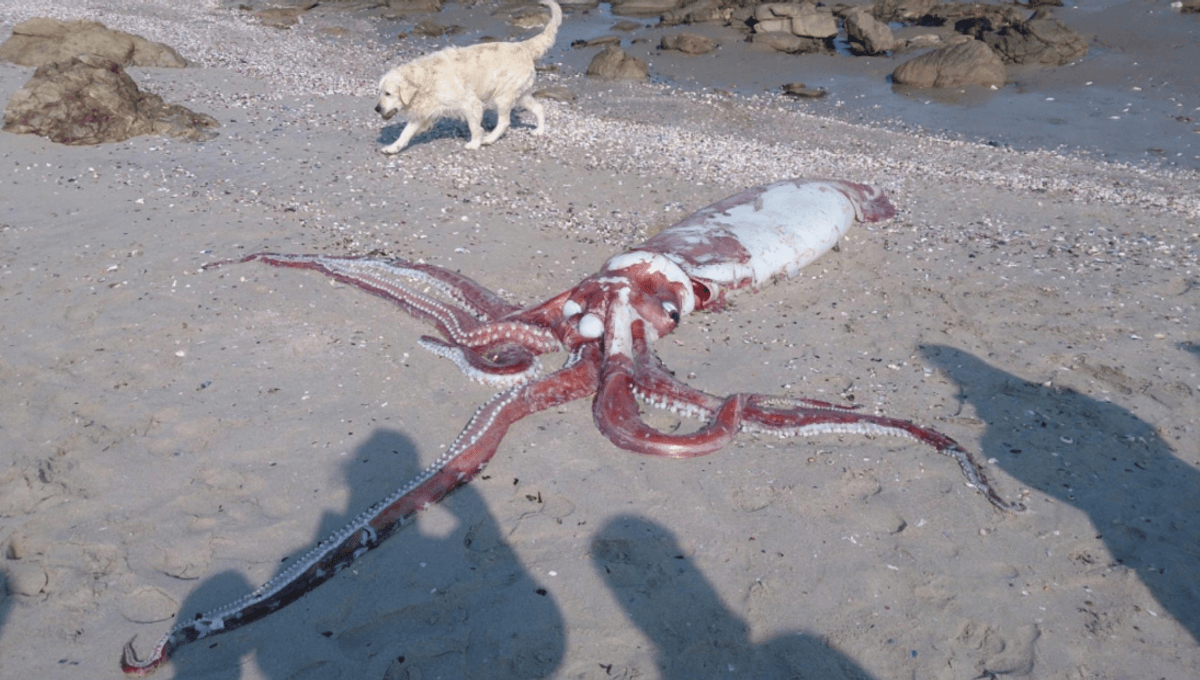
One of the greatest battles an animal lover faces is wanting to see living things up close but needing to accept that in many situations this is neither practical, possible, or ethical. While zoos and aquariums can play a vital role in safeguarding populations that are vulnerable in the wild, there are many species that simply can’t thrive in a captive environment, which is why – and with a heavy heart – we must break it to you: you’re never going to see a giant squid in an aquarium.
The giant squid (Architeuthis dux) is an epic deep-sea animal. They can be about the size of a bus with eyes as big as dinner plates and have a bizarre, hard, bird-like beak in the middle of their soft squishy bodies – you’d be nuts to not want to see one alive. Unfortunately, only a handful of people ever will.
The largest giant squid ever recorded by scientists was 13 meters (43 feet) long, says Smithsonian Ocean, and weighed nearly a ton. So, the first clue as to why they wouldn’t thrive in an aquarium is in the name – they really are giants. We’ve seen the damaging effects that small enclosures can have on wild animals in countless species, sometimes resulting in “zoochosis” where captive animals carry out repetitive behaviors like pacing, over-grooming, or cyclic swimming.
Ethics aside, it would also be enormously difficult to recreate a giant squid’s natural environment in an aquarium setting. The world’s largest aquarium tank is 125 meters (410 feet) wide and 11 meters (36 feet) deep, but giant squid typically live at depths of around 1,000 meters (3,300 feet), so we’re a little ways off.
Even if someone were to turn the staggeringly deep Krubera Cave into an aquarium, the artificial habitat would probably still fail, as we know so little about how these elusive animals live. Captive animals require carefully prescribed nutrition and enrichment programs in order to thrive in zoos and aquariums, and the first step to providing those is knowing what they are.
What we do know about giant squid is that they’re intrigued by robot jellyfish (as this cool video shows), but mostly hunt deep-sea fishes and other squid. According to the MarineBio Conservation Society, they hunt by snatching things with their tentacles and latching on with serrated suckers that cut into flesh. It’s nightmare fuel, and also really hard to recreate as a form of enrichment without bringing more live deep-sea species into the picture.
Here, we face another obstacle: where do you get a giant squid from, anyways? A quick image search will show you that most of what we know and have seen of Architeuthis is from dead animals (we also would’ve preferred to use a living giant squid image for this article). So, as you can imagine, going out and fetching one for display is no small feat, and once you get it back it probably won’t live very long even in the most carefully designed of enclosures because they have a short lifespan.
In short, if you have dreams of opening the world’s first Architeuthis adventure park, it’s bad news. But then again, isn’t it kind of nice not to know everything, about everything, all of the time?
Alright, Architeuthis. Keep your secrets.
Source Link: Want To See A Giant Squid In An Aquarium? Here's Why You Never Will